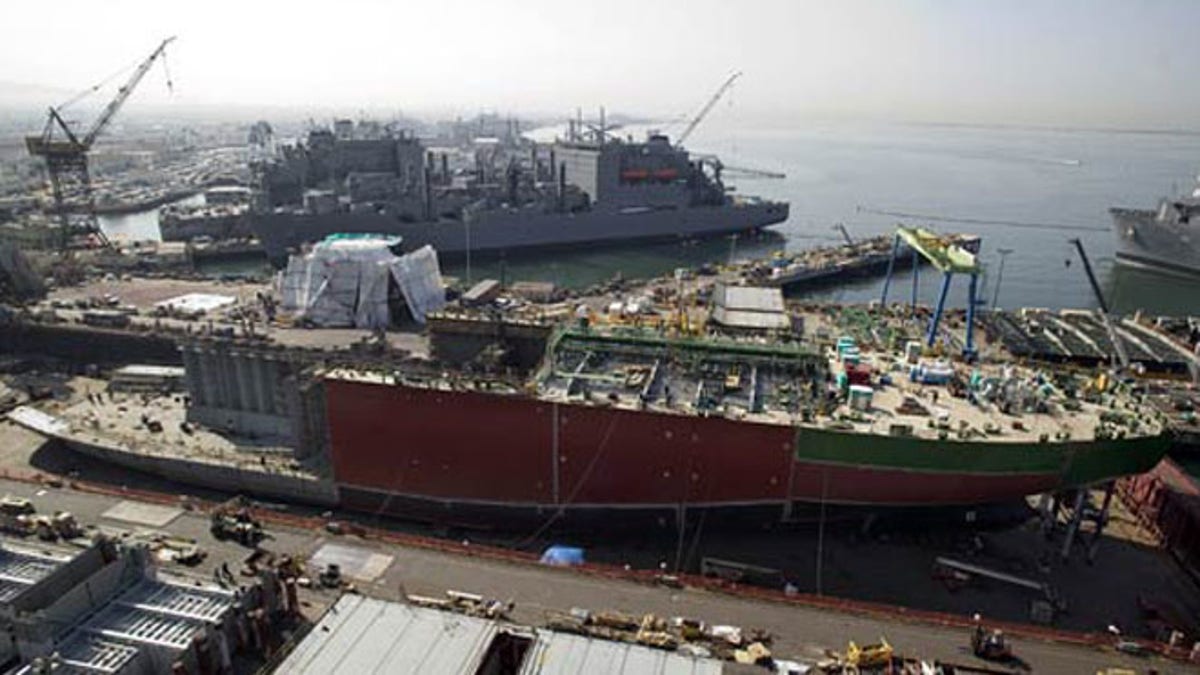
(NASSCO)
The Great American Energy Boom is having a major ripple effect on the shipbuilding industry, which thanks to a 1920s maritime law, is busier than it has been in decades.
Some ten supertankers are currently under construction at U.S. shipyards, with orders for another 15 in the pipeline. That may not seem like a huge number, but considering there are only about 75 such tankers plying American ports now, it represents a genuine boat-building boom.
“We haven’t seen something like this since the 1970s,” Matthew Paxton, president of the Shipbuilders Council of America said to FoxNews.com. “The movement of more oil has built up a real commercial shipbuilding renaissance.”
[pullquote]
The renaissance comes despite an economy that continues to struggle. It's because of a specific sector of the U.S. economy that is also booming: natural gas production. The fuel must be transported, even within the country, either by rail, pipeline or ship. And if it is by ship, the ship must be American-made and American-manned, according to the 1920s Merchant Marine Act, also known as the Jones Act.
Paxton said that it is projected that up to 3.3 million barrels will be shipped out daily from the Gulf Coast by 2020, destined for ports along the east and west coasts, causing huge demand for tanker ships.
“It could be higher as more and more tankers are built,” he said.
With record amounts of gas and oil being extracted from shale by the process of fracking, the U.S. has seen an energy boom in recent years that has proponents calling it the Saudi Arabia of natural gas. Much of the fuel is being exported, but most is staying here, being distributed around the nation for domestic use.
The Aker Philadelphia Shipyard recently announced that it invested a total of $115 million to construct four tanks and plans to build eight in total.
“The shale revolution is creating industrial opportunities throughout the United States and specifically here in Philadelphia,” Kristian Rokke, President & CEO of AKPS, said in a recent statement. “This strategic opportunity allows us to capitalize on the increased demand for Jones Act tankers in a way that will transform APSI in the years ahead.”
Constructing one tanker, which could be more than 600 feet long and nearly 200 feet wide, can cost upwards of $100 million. Once they are up and running, the ships more than earn their keep. Transport companies pay up to $100,000 per day over a five-year contract to lease them.
Currently, the shipping industry contributes $36 billion to the economy.
“We need another shipyard or two,” said Bob Flynn, president of shipbroker MJLF & Associates in Stamford, Conn., at the recent TradeWinds Jones Act Shipping Forum in New York.

